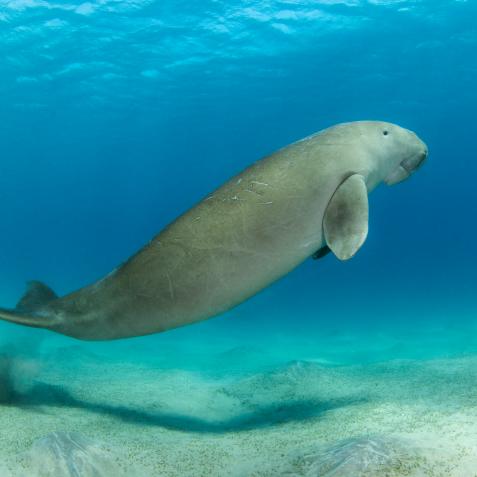
VW Pics
Rediscovered in Ocean's Twilight Zone: the Short-Nosed Sea Snake
The short-nosed sea snake was recently rediscovered in the ocean’s twilight zone, 200 feet below the surface. Scientists are furthering their research with genetic testing.
In Western Australia, specifically Ashmore Reef, scientists were conducting research when they came across a startling re-discovery. There laid a short-nosed sea snake, a species scientists had presumably categorized as “locally extinct” since 1998. These olive-colored creatures are a member of the Elapidae family, along with cobras, taipans and death adders, meaning they have “short, hollow fixed fangs capable of injecting predominantly neurotoxic venom.”
Luckily, the scientists onsite who spotted the short-nosed sea snake were inside a research vessel with “advanced robotic technologies,” safe from the slithering thought-to-be-extinct reptile. Blanche D’Anastasi, a sea snake expert at the Australian Institute of Marine Science, was contacted immediately for confirmation at this historic sighting.
Short-nosed sea snakes were once considered “abundant” within the Ashmore Reef region. D’Anastasi noted the species decline began back in the 1970s and merely depleted in the early 2010s, leaving marine biologists concerned with this “downward trend.”
Although the species was considered presumably extinct, Kate Sanders, a reptile ecologist at the University of Adelaide, and her team located a few small isolated populations along the coast in 2016, according to Newsweek. However, the short-nosed sea snakes Kate’s team found were “significantly” different from the reef sea snakes residing within Ashmore Reef, such as head size. This theorizes the possibility of an entirely different species of sea snakes.
Interestingly enough, the reef sea snake found in Ashmore Reef was located 220 feet below the surface in the ocean’s twilight zone, the region of the ocean that receives little to no sunlight. This location hypothesizes two theories: the reef sea snakes have been residing this entire time scientists considered “extinction” which allowed them to be undiscoverable, or the coastal sea snakes identified by Kate’s team have expanded their territory, Sanders explains.
"Could they have recolonized from the coast? That's a really important question," Sanders said. "If it's the coastal population that's recolonized, that would suggest we've lost that historical diversity that used to be present on Ashmore."
Scientists are relying upon genetic testing for answers.












































































